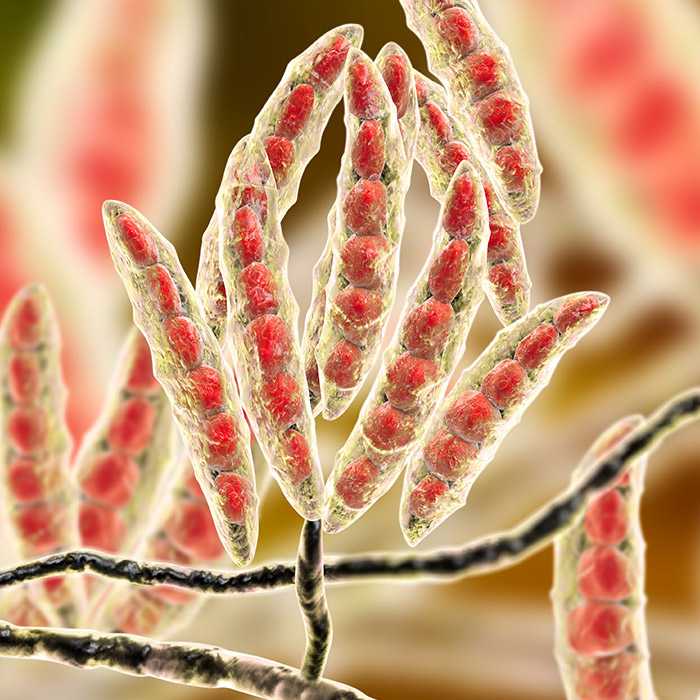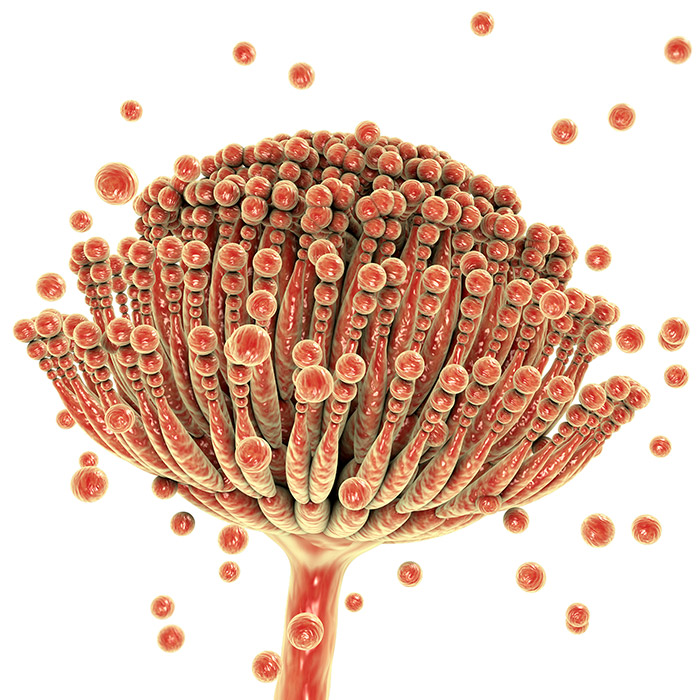
What are Aflatoxins?
Aflatoxins are toxic metabolites produced by certain fungi found on agricultural crops such as wheat, cereal grains, corn, peanuts, cottonseed, tree nuts, dried fruit, and some spices, such as chili and paprika
Milk and milk products may also be contaminated when ruminant animals consume aflatoxin-contaminated feed. While most widespread in warm and humid regions of the world, aflatoxin-producing fungi can contaminate crops in the field, at harvest, and during storage—making them one of most widespread and dangerous mycotoxins. Commonly found in soil, hay and decaying vegetation, the main fungi that produce aflatoxins are Aspergillus flavus and Aspergillus parasiticus. Different aflatoxin metabolites exist, including B1, B2, G1, G2, M1 and M2.
Aflatoxins comprise one of the major groupings of mycotoxins. Like several other mycotoxins—deoxynivalenol (DON/vomitoxin), fumonisin, ochratoxin, T-2/HT-2 and zearalenone —aflatoxins pose risks to human food safety, as well as to animal feed and pet food. The prevalence and dangers of aflatoxins require farmers, grain mills, grain handlers and suppliers to remain well-informed and vigilant about aflatoxin testing and related mycotoxin risk management.
What are the Harmful effects of Aflatoxins?
Although naturally occurring, aflatoxins are considered to be some of the most carcinogenic substances known.
Aflatoxins can cause serious liver damage in humans. Children are particularly affected by aflatoxin exposure, which can put them at risk of stunted growth, delayed development, liver damage, and liver cancer. Adults have a higher tolerance to aflatoxin exposure, but chronic low-level exposure to aflatoxins remains a risk.
According to the FDA, the small amounts commonly consumed in the US pose little risk, but aflatoxin outbreaks have occurred in developing countries, such as Kenya, where high intakes of aflatoxin have been linked to liver cancer and have caused outbreaks of acute poisoning (aflatoxicosis).
No animal species is immune. The susceptibility of individual animals to aflatoxins varies considerably depending on species, age, sex, and nutrition, but aflatoxins have been associated with various diseases in livestock and domestic animals throughout the world. The animals most at risk of having serious problems with aflatoxins are pigs, ducklings, and trout, while cattle are less at risk. In animals, aflatoxins cause liver damage, decreased milk and egg production, recurrent infection as a result of immunity suppression, and embryo toxicity. Aflatoxicosis in animals include gastrointestinal dysfunction, reduced reproduction, anemia, and jaundice.

Because aflatoxins are regularly found in improperly stored staple commodities such as corn, wheat, cotton seed, millet, peanuts, rice, sorghum, sunflower seeds, and tree nuts, their exposure can be wide ranging. When contaminated food is processed, aflatoxins can enter the general food supply. Aflatoxins have been found in both pet and human foods, as well as in feedstocks for agricultural animals. Animals fed contaminated food can pass aflatoxin into eggs, milk products, and meat.

Why should you test for Aflatoxin?
Aflatoxins cause significant negative impacts in markets such as farms, feed, and grain mills. They reduce productivity, decrease yields, and depress quality. In addition, regulatory compliance calls for stringent aflatoxin detection.
The United States Department of Agriculture (USDA) monitors crops for aflatoxin, while the Food and Drug Administration (FDA) routinely samples products to make sure they don’t exceed maximum allowable levels. Ultimately, it is the obligation of commodities sellers and food businesses to maintain standards of quality in their grains and other foodstuffs, making aflatoxin testing a necessary tool for farmers, grain mills and grain handlers. According to the UK’s Food Safety Act of 1990, “It is an offence under the Act for anyone to sell food which is not of the nature, substance or quality demanded by the customer. It is the responsibility of a food business to ensure that they have adequate food hygiene standards within their business.”
Regulations and guidance in nations around the world exist to monitor and protect the human food and animal feed supply—which are enforced through fines, penalties, and recalls. These regulations set the limits regarding contaminants in commodities. They also detail the methods for control and compliance with food laws. The United States Food and Drug Administration (FDA) has in the past declared both human and pet food recalls as a precautionary measure to prevent exposure. Aflatoxins have received significant attention in the media, linking dog food to dogs’ liver illness and cancer deaths.
In addition to food safety compliance, knowing how to test for aflatoxins with accuracy and consistency can help producers and suppliers ensure a premium product, resulting in more productive and profitable outcomes.
Who Should Test for Aflatoxins?
Farmers, grain mills and food processors can minimize the growth of aflatoxins by following good management practices, which include the reliable use of aflatoxin test kits at key points. To ensure product safety, grain handling and storage facilities must screen inbound grains. In order to guard against contamination, it is considered best practice to perform aflatoxin testing at every stage in the seed or grain supply chain. Certain environmental conditions in which aflatoxins flourish may call for more frequent aflatoxin analysis:
- Sudden changes in weather
- Extreme heat and drought before harvest
- Moist, humid storage conditions
- Grain elevators above 70% humidity
Grains Tested for Aflatoxins
Crops commonly tested for aflatoxin contamination include: corn, cottonseed, millet, wheat, peanuts, sorghum, DDGS, barley, rye, rice, soybeans, sunflower seeds, tree nuts, and oats.
How to Test for Aflatoxins
Three primary methods are available for mycotoxin analysis. The HPLC method for mycotoxin detection is time-consuming, and both HPLC and ELISA methods require expensive laboratory equipment. LFD testing strips are a simple, fast and cost-effective way to perform a mycotoxin test with quantitative or qualitative results. Only with proven and certified mycotoxin testing technology can users make objective, real-time decisions that meet regulation standards and mitigate the risks of lost productivity and health due to aflatoxin contamination.
